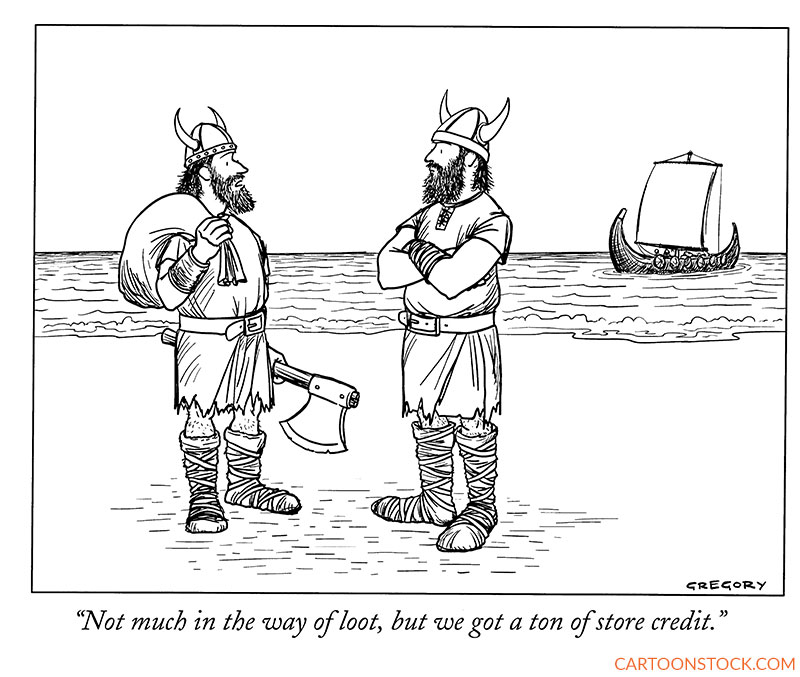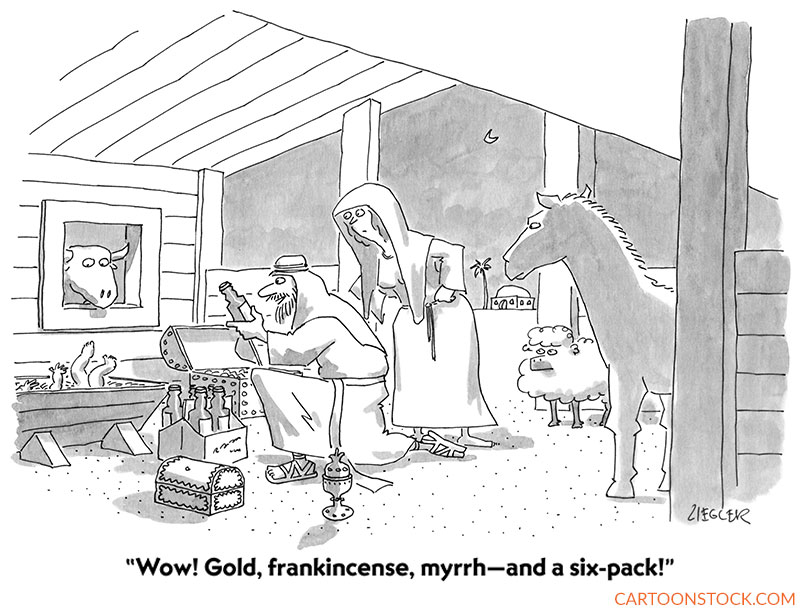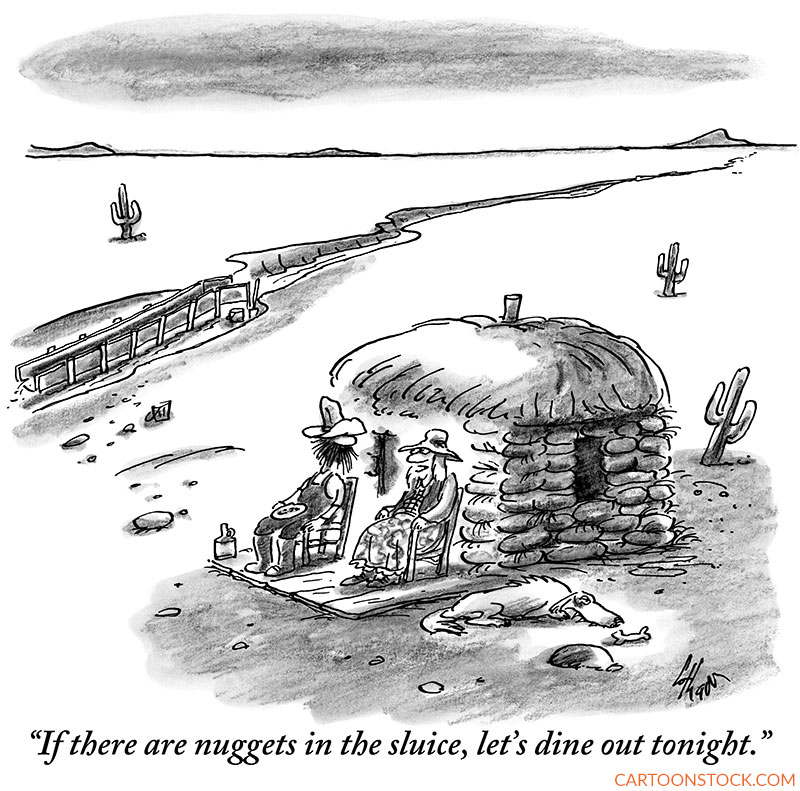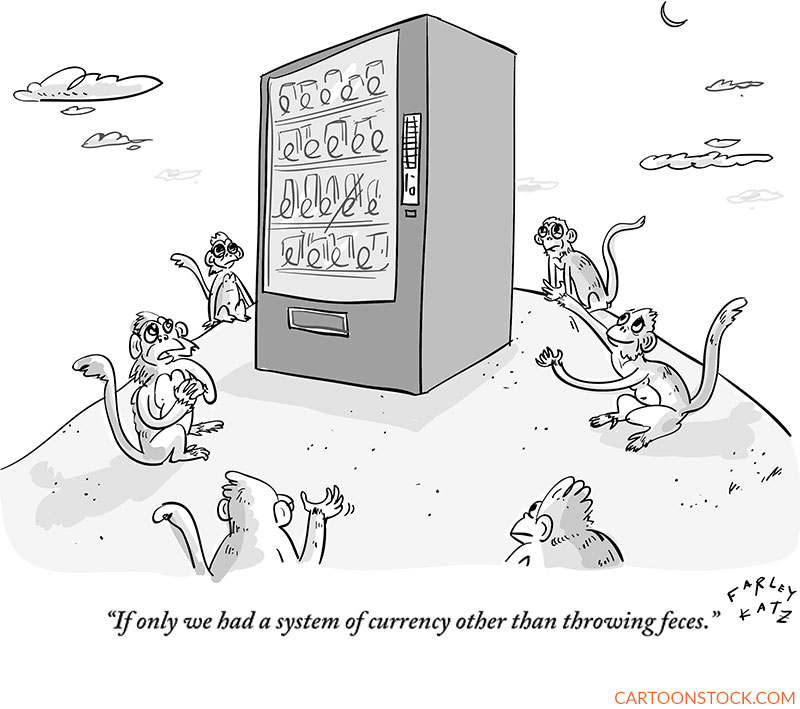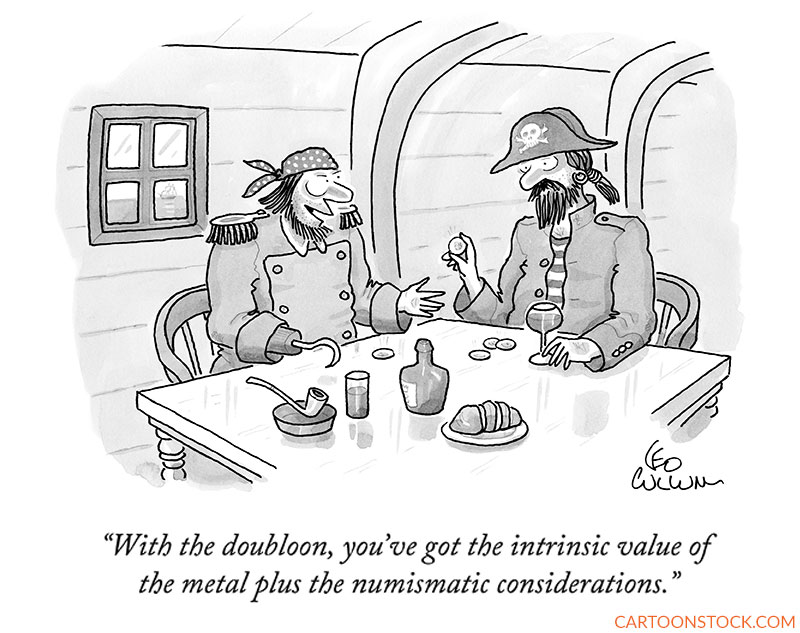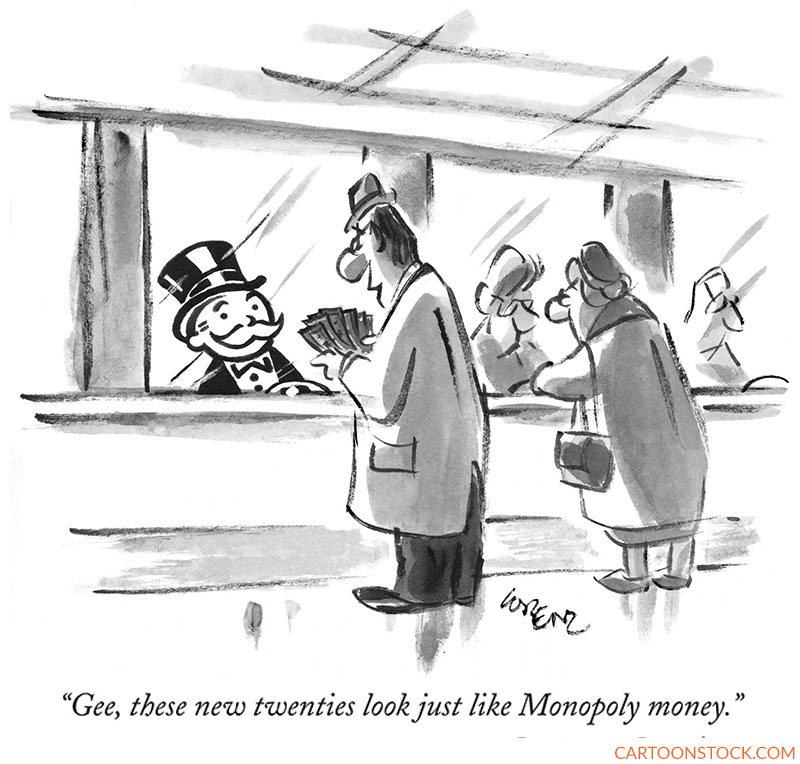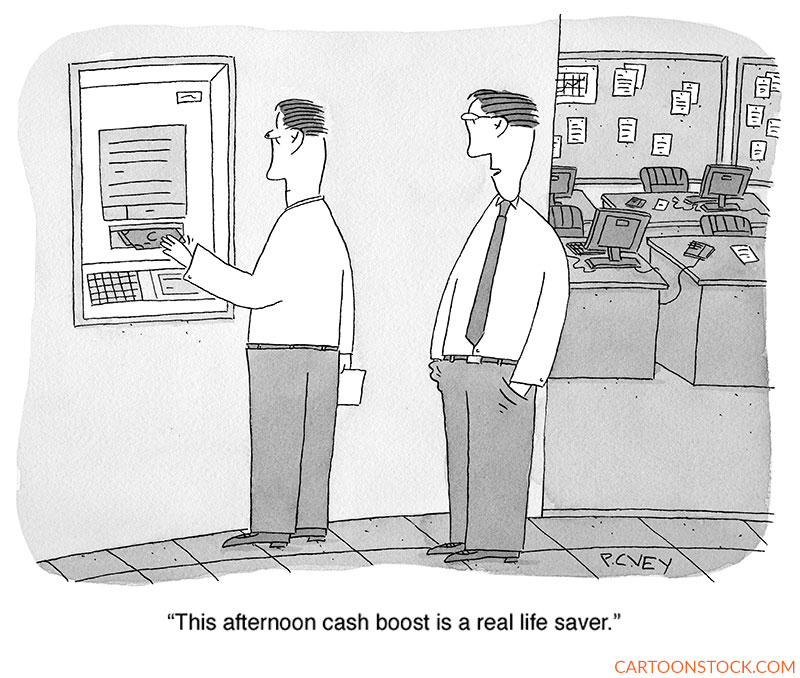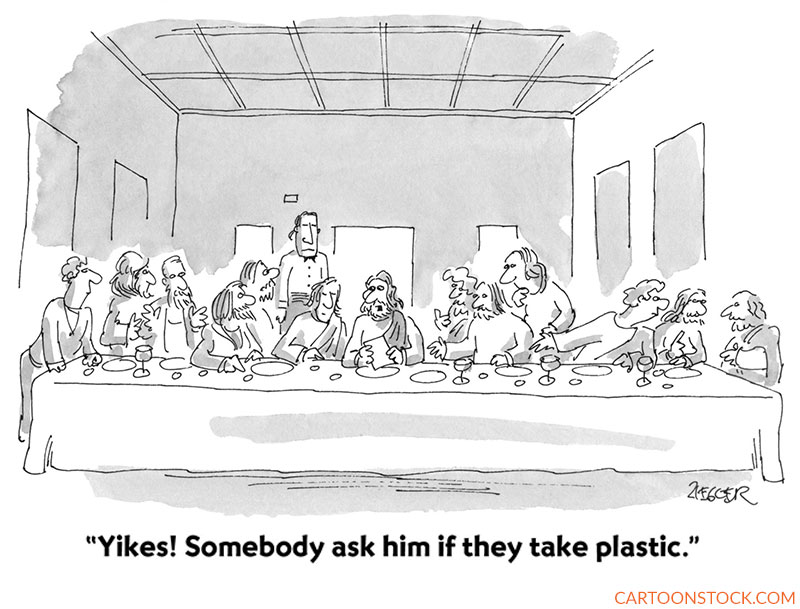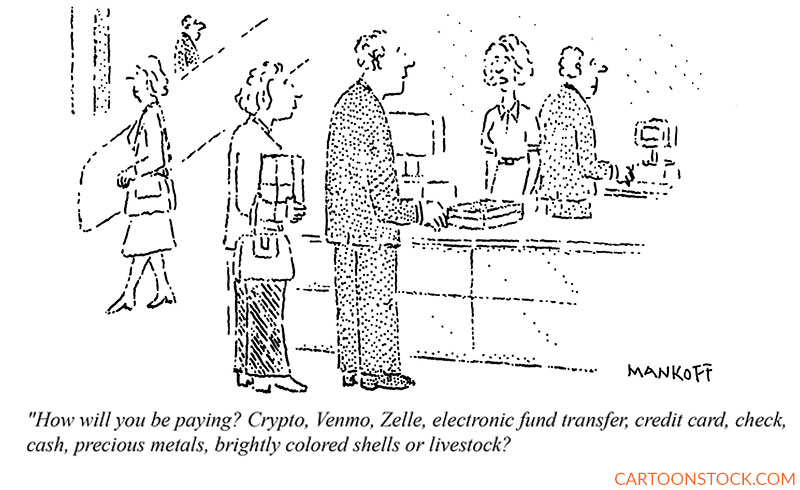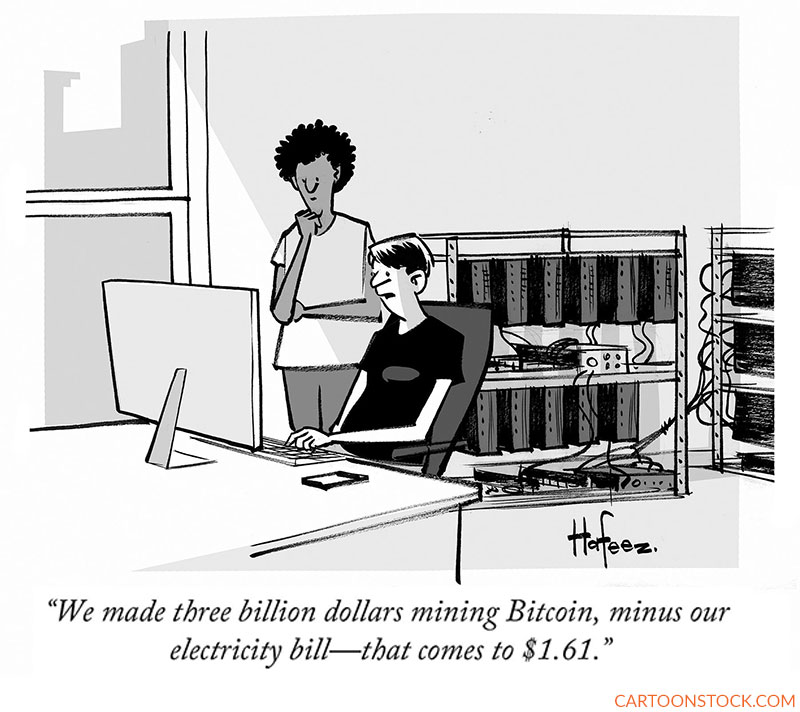
Cartoon critics Phil Witte and Rex Hesner look behind the gags to debate what makes a cartoon tick. This week our intrepid critics take a look at cryptocurrency.
Money formerly came in two flavors: coins jingling in pockets and paper bills sheaved into wallets. Prior to that, chunks of gold, silver, or even beads were the medium of exchange. Now, plastic credit cards have replaced all that, and we’re hurtling ever closer towards the most abstract money of all … cryptocurrency.
We start our journey with the Vikings, who had no need for payment systems or even barter—they just took what they wanted. Cartoonist Alex Gregory eavesdrops on a couple of coastal raiders discussing the day’s plunder.
A couple millennia ago, tree resins used to make incense were as valuable as precious metals. With that in mind, we journey to an unusual version of the Bethlehem nativity scene, one not found in your typical catechism. In Jack Ziegler’s cartoon, one of the Magi left a little something extra.
Gold has always stood the test of time as the, well, gold standard for any exchange medium. A small sack of those yellow flakes represented real purchasing power. Given the boom-or-bust nature of gold mining, a pair of Frank Cotham’s classic hut dwellers ruminate on a night out on the town. In this relatively simple drawing, the cartoonist has evoked a vast and barren landscape that contrasts comically with the woman’s upbeat suggestion. And “nuggets in the sluice” is a wonderful turn of phrase.
At some point eons ago, rapidly evolving civilizations required more precise methods of exchange. Standardized coins were a giant step in that direction, a fiscal concept even monkeys could appreciate, according to Farley Katz. “A system of currency” and “throwing feces” are two phrases seldom used in the same sentence.
Soon, coins became the medium of exchange throughout the world. Gold and silver, large and small, coins became a form of treasure easily hefted in hand. The most romantic of all currency—the doubloon—is the focus of Leo Cullum’s piratical deliberations. One does not expect such modern, high-flown language from these buccaneers.
Ah, the paper bill–a means of currency looked upon with distrust since its first issuance. Why is this flimsy item worth anything? Former New Yorker Cartoon Editor Lee Lorenz captures that hesitancy with the help of a well-known financial icon.
Of course, traditional bank hours have long rankled previous generations by their inconvenience. That all changed with the world’s first ATM at London’s Barclay’s Bank in 1967. P.C. Vey knows the instant joy an automated cash dispensary can give.
Large restaurant dinners can challenge any wallet for immediate cash on hand. Irreverent as always, Jake Ziegler couldn’t resist imaging a cashless Last Supper. “Yikes” is the perhaps most unlikely expression associated with this most solemn occasion—perhaps it appears only in the Apocrypha.
The dizzying proliferation of monetary forms boggles the imagination. With so many payment options, former New Yorker Cartoon Editor Bob Mankoff could barely list them all. The humor derives not only from the length of the list—a comment on the complexity of modern transactions—but also on how the options become progressively archaic.
Bitcoin has entered the public discussion as a dark and mysterious form of currency. Add to that the possibility of earning money while “mining” bitcoin—a strange concept, to say the least. The rewards of this activity are capricious and underwhelming, especially given the enormous energy required to create this form of non-tangible capital, the point of Kaamran Hafeez’s cartoon.
Now more readily available, bitcoin and its ilk may become the electronic coin of the realm. And why not? The pandemic has nearly killed off the need for cash. In preparation for the future, Barbara Smaller warns parents they better keep up with the times to make junior happy; change—but not loose change—marches on.


